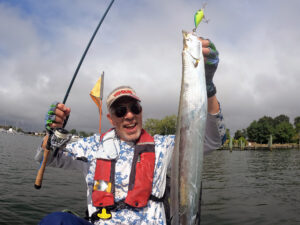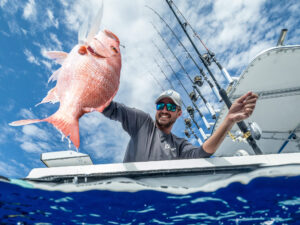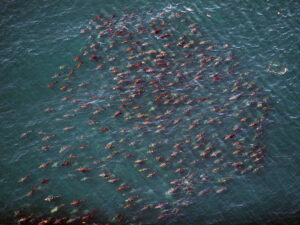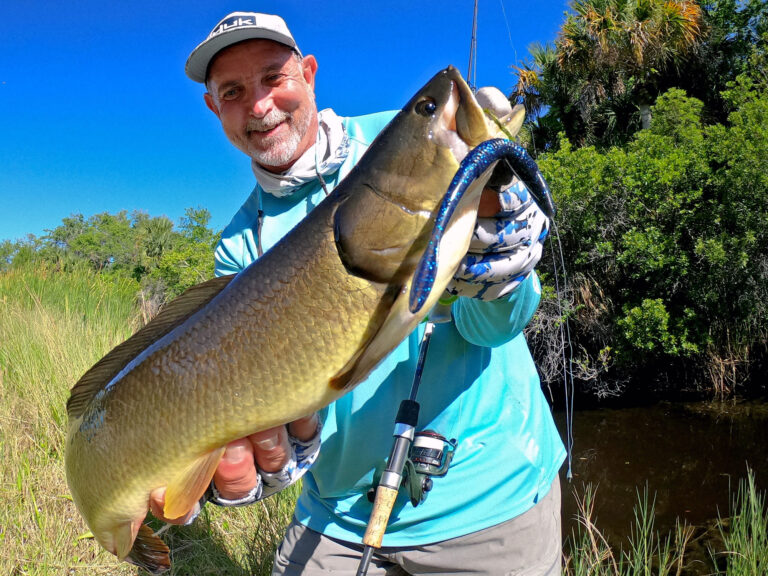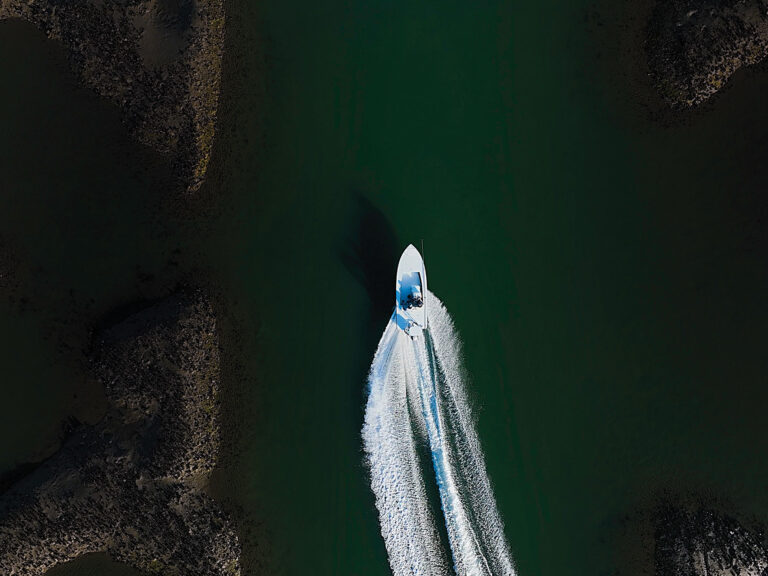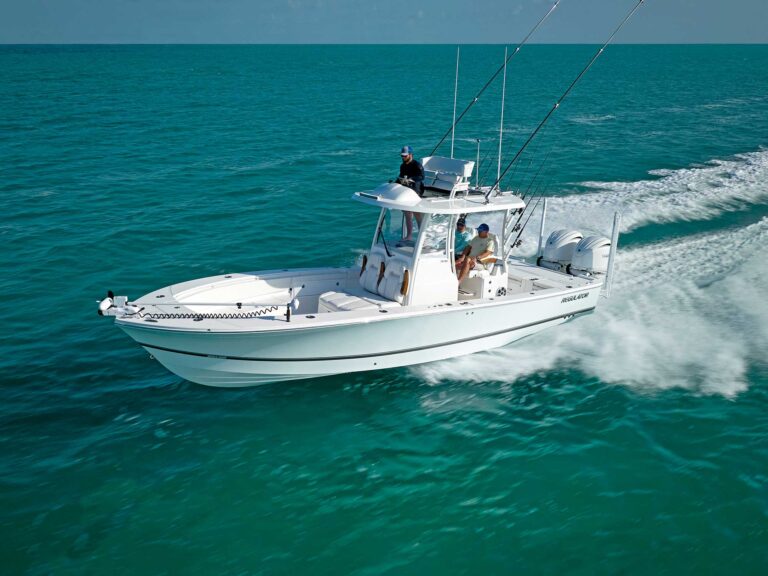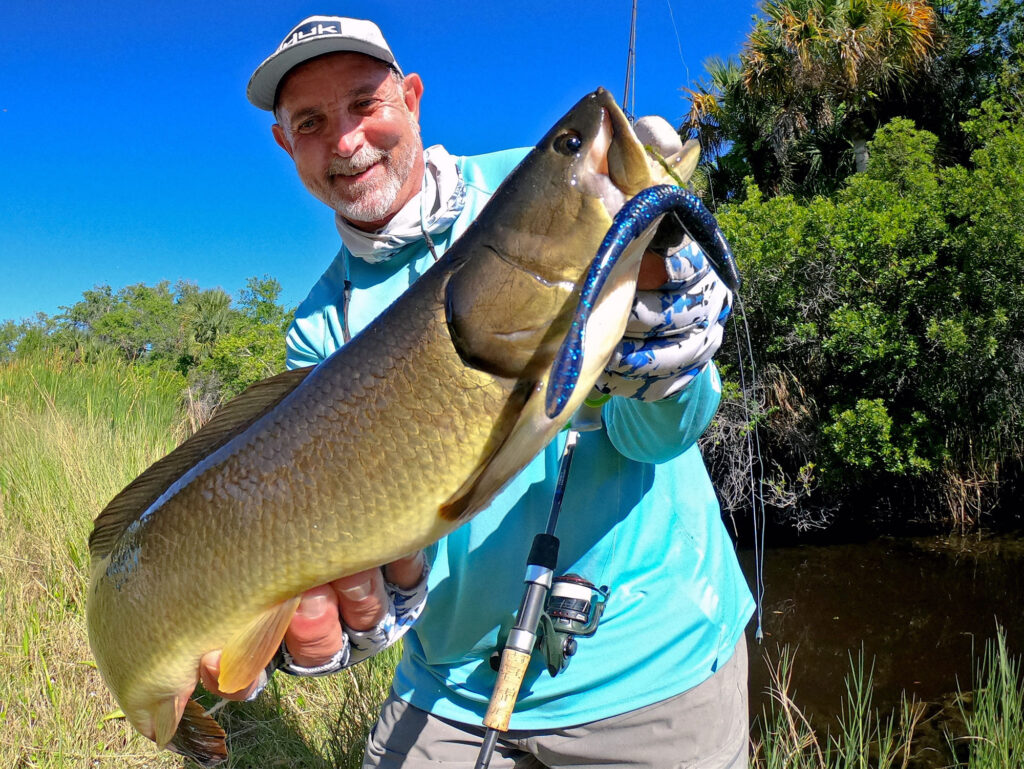
In the prestige column, where largemouth bass rate a 10, bowfin come up snake eyes. But those who know and appreciate bowfin will tell you when it comes to rating these species’ fight, the bowfin should come out well on top. Very few native North American game fish will outfight the bowfin. Other names for bowfin include choupique (Louisiana), grindle, mudfish or dogfish.
Notice the descriptor “native.” No one can suggest the bowfin is introduced or invasive; in fact, they’re one of the most indigenous of our fishes, found only in (eastern) North America. And this living fossil has been around longer than most species of fish — since the Triassic era, 150 to 200 million years back. It’s the only living member of the order Amiiformes, other species extinct. Clearly, the bowfin is a survivor.
Bowfin are Tough-Fighting Fish
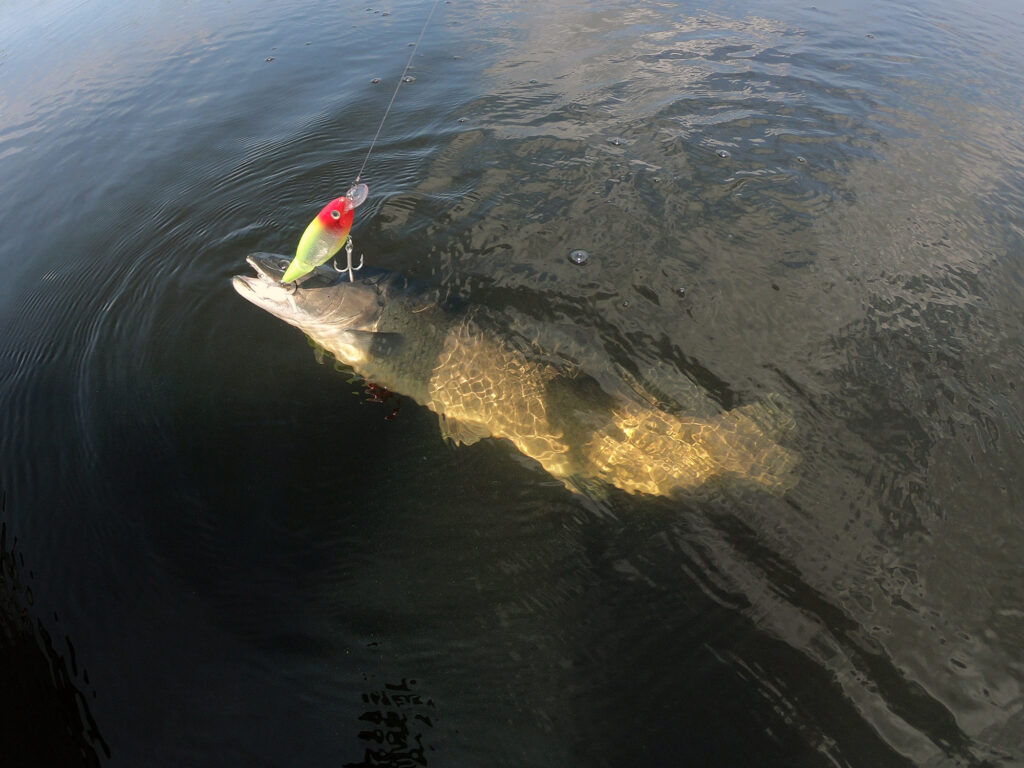
It’s also an irascible brute. After catching many bowfin, I’ve learned to be cautious when trying to unhook one, whether boat side or in the boat. One might suppose these fish wear themselves out with their take-no-prisoners response to being hooked: They make unstoppable runs, sudden turns and come flying out of the water in wild leaps. They just don’t give up. Yeah, bowfin really do make bass seem pretty tame.
If, after all that, you can get them to boat, watch out. Bowfin launch into what anglers have termed a death spiral: they spin unstoppably, with great force, twisting and wrapping themselves in line and leader, and often making it nearly impossible to zero in on the hook in their jaw with pliers.
Where to Catch Bowfin
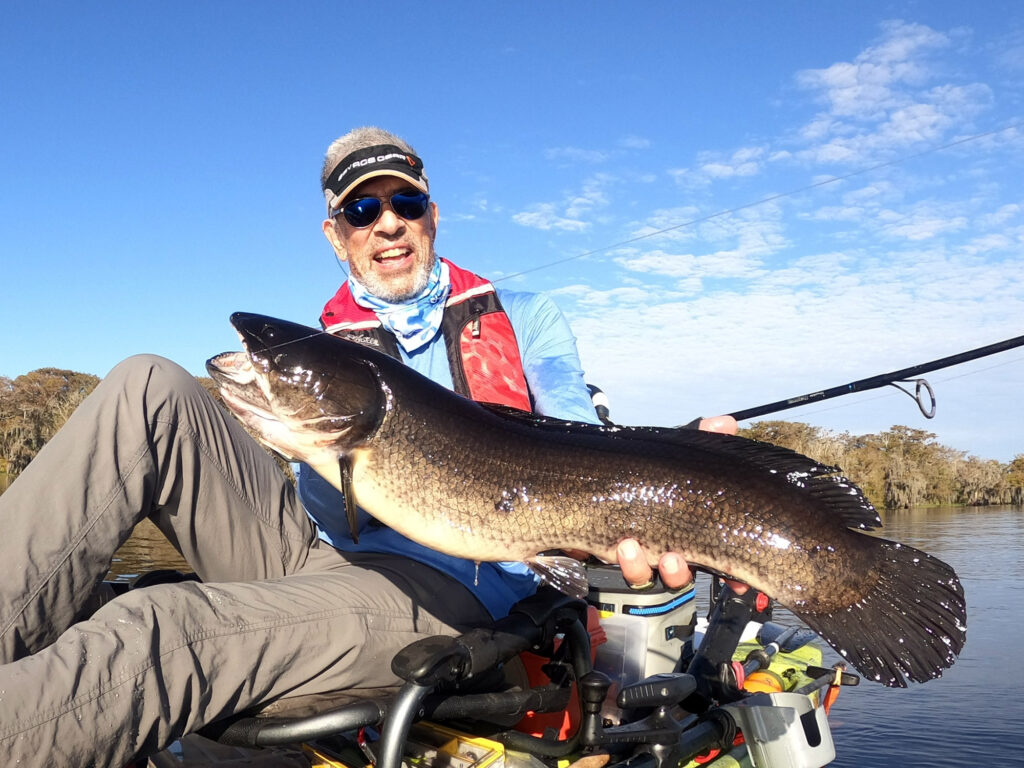
Often in warm weather, shallow, weedy waters without much current become increasingly hypoxic, as oxygen is used up. Thus most game fish species move out to deeper, less oxygen-deprived habitat. But one predator can remain: the bowfin. That’s because this ancient species is a bimodal breather, retaining its ability to breathe air, which it does by gulping in air at the surface which it can store in its swim bladder from which small blood vessels can take in the oxygen as if from a lung.
This explains their tendency to gulp at the surface or roll in very shallow waters. Anglers may sight-cast to these fish, but success at that can be tricky. That’s because bowfin are decidedly not visual feeders. These patient ambush hunters sit motionless over or in weeds until prey — or a lure or chunk of bait — moves essentially right in front of them. That’s the challenge for the angler. Bowfin will hammer any moving lure as a rule if they see it, so an angler has to get his retrieve right past its nose. Then, hang on! Their no-nonsense strike can rip the rod out of unprepared hands.
Fishing for Bowfin
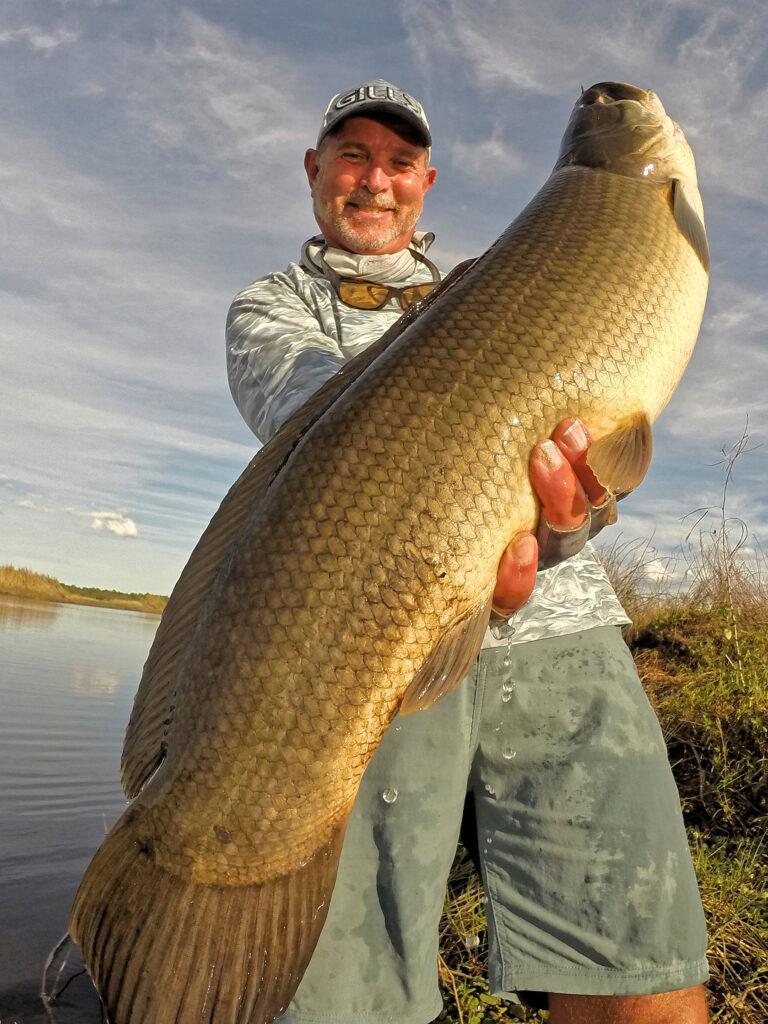
Fortunately, the odds of being able to get close enough to drop your offering into their zone are increased because these things are not spooky. I’ve had them swim away if alarmed but not far at all, then stopping to offer more shots. They can be wary, however, and a boat may inhibit them from striking.
Sight-casting to bowfin is action at its most exciting, when fishing waters clear enough to spot them. Often, enthusiasts like Florida angler Paul MacInnis say that clear conditions and sunlight are important, since, “They don’t tend to push wakes or tail when feeding to reveal themselves. But when I can get a lure in front of one, I like to give it just a twitch or two — just enough to catch the bowfin’s attention. They’re aggressive and will usually pounce on it.”
But mostly, anglers drifting over shallow, weedy waters with low visibility, probably drift right past the big ones. That’s when fishing live or cut bait gets results. Apparently, what bowfin lack in the way of visual acuity, they compensate for with a keen sense of smell and the ability to detect vibrations.
Bowfins are Not Snakeheads
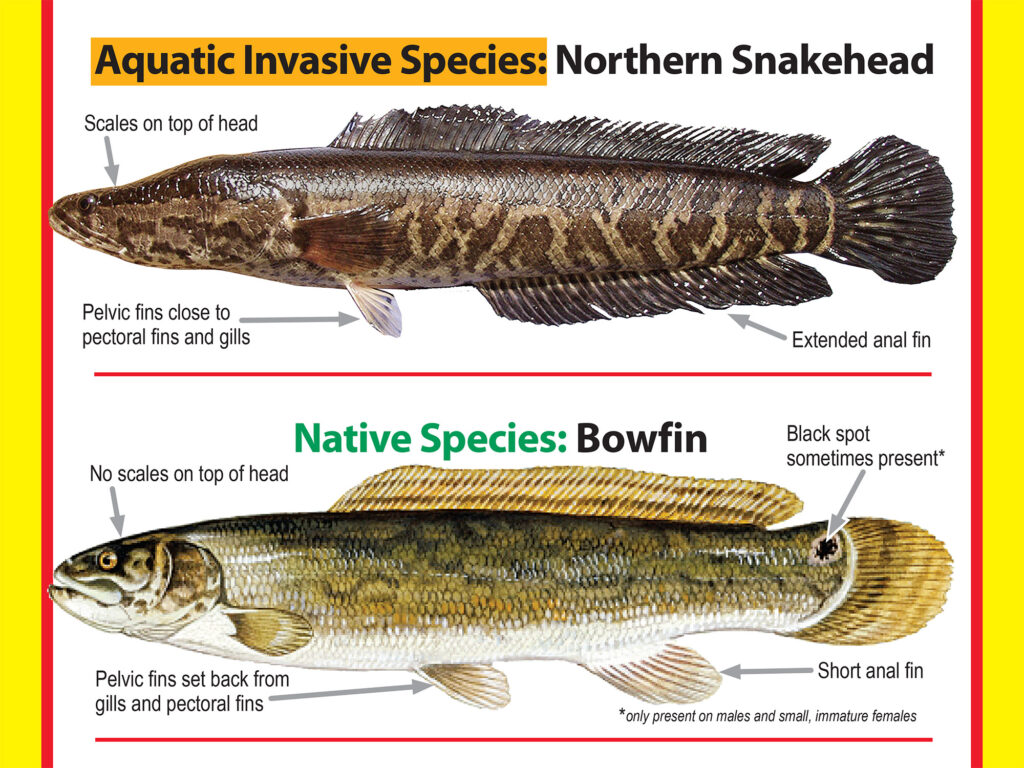
Until recently, one could maintain that bowfin couldn’t be confused with any other North American fish found in the same waters. The invasion of Asian snakeheads in much of the United States has changed that, since the two species share a similar elongate shape and distinctive characteristics such a large rounded tail and a dorsal fin that runs more than two-thirds of the body length. Those familiar with both species easily distinguish them since the snakehead’s head is more streamline like a snake, whereas the bowfin’s is more rounded. Lastly, the snakehead has a very long anal fin, while the bowfin’s is quite short.
Of course a major difference is that bowfin are native sons. While some anglers mistakenly accuse them of “eating all the bass” and other gamefish, they’re not any kind of a threat to the ecological balance of waters in which they live. Unwanted bowfin should be released alive. On the other hand, snakehead are considered an invasive species, and many states still ask anglers to kill them if caught.

